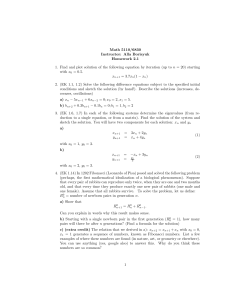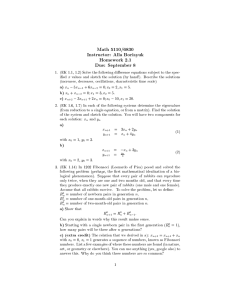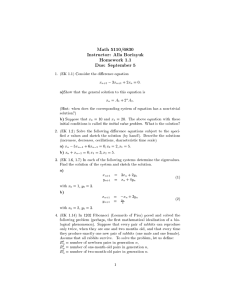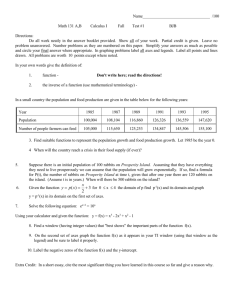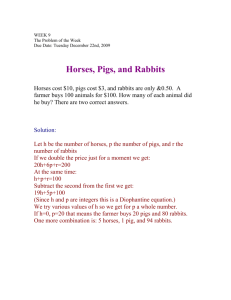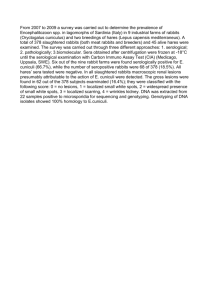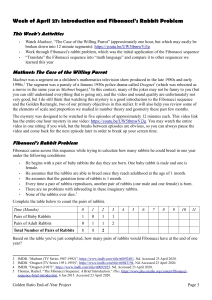Discrete Population Models – An introduction
advertisement
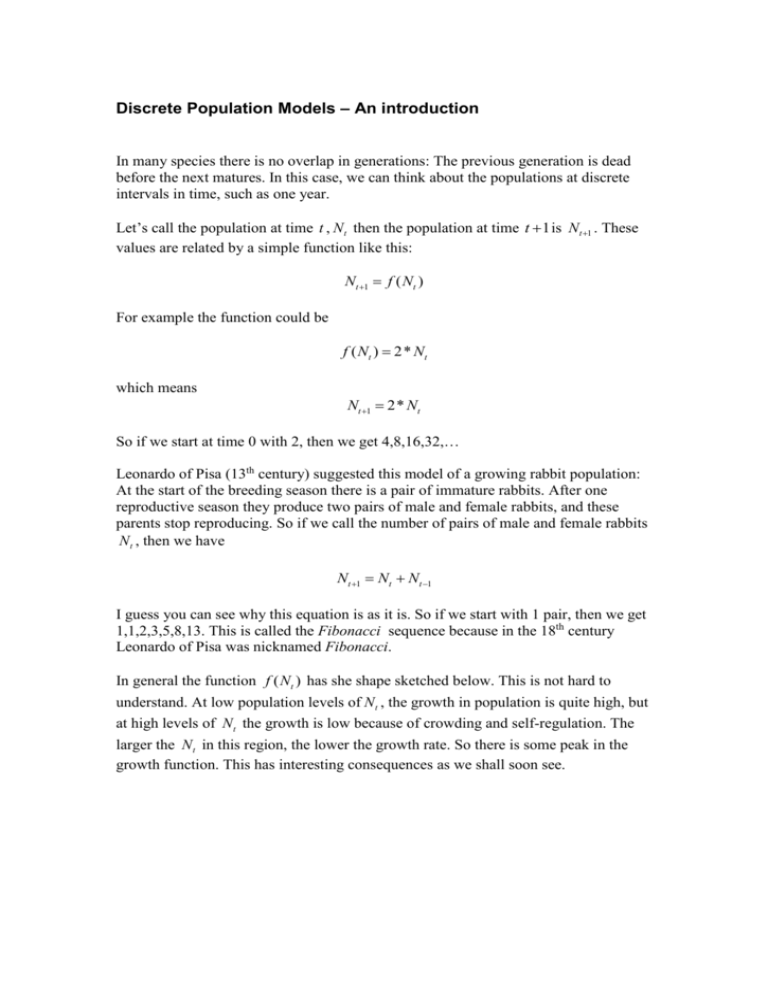
Discrete Population Models – An introduction In many species there is no overlap in generations: The previous generation is dead before the next matures. In this case, we can think about the populations at discrete intervals in time, such as one year. Let’s call the population at time t , N t then the population at time t 1 is Nt 1 . These values are related by a simple function like this: Nt 1 f ( Nt ) For example the function could be f ( Nt ) 2* Nt which means Nt 1 2* Nt So if we start at time 0 with 2, then we get 4,8,16,32,… Leonardo of Pisa (13th century) suggested this model of a growing rabbit population: At the start of the breeding season there is a pair of immature rabbits. After one reproductive season they produce two pairs of male and female rabbits, and these parents stop reproducing. So if we call the number of pairs of male and female rabbits N t , then we have Nt 1 Nt Nt 1 I guess you can see why this equation is as it is. So if we start with 1 pair, then we get 1,1,2,3,5,8,13. This is called the Fibonacci sequence because in the 18th century Leonardo of Pisa was nicknamed Fibonacci. In general the function f ( Nt ) has she shape sketched below. This is not hard to understand. At low population levels of N t , the growth in population is quite high, but at high levels of N t the growth is low because of crowding and self-regulation. The larger the N t in this region, the lower the growth rate. So there is some peak in the growth function. This has interesting consequences as we shall soon see. Nt 1 Nt There’s an interesting way to find how the population changes over time – and it does not involve any arithmetic calculation. It’s a graphical technique called “cobwebbing”. To understand how this works, think again what we are actually doing in using the above equations. We start with N1 and put it into the function and we get N 2 as output, and what do we do? Stick this back into the function as input and we get N3 out and so on. Recursion! How do we show this output-back-in-as-input on the graph? Well we draw a line at 45 degrees. This line connects points which have equal values on the horizontal and vertical axes of the graph. We start with N1 on the bottom axis of the graph and draw a vertical line up to the function, so getting the output of the function N 2 . Now to return this output as the next input, we draw a horizontal line from this point until it reaches the 45-degree line, so the output value is transferred to the input. This is sketched below: Nt 1 Nt FIRST INVESTIGATIONS 1. Try cobwebbing the following functions. Choose at least 2 different starting values and draw the cobweb as accurately as you can. Confirm that the final “equilibrium state” does not depend on the starting value. 2. From the samples given, try and deduce some conclusions about how the shape of the function affects the final population. Nt 1 Nt 1 Nt Nt Nt 1 Nt 1 Nt Nt Nt 1 Nt 1 Nt 4. Look up the “Allee effect”. It corresponds to one of these curves. FURTHER INVESTIGATIONS Nt A very famous function is the “logistic”. This has the shape of an upside-down parabola and has the mathematical form Nt 1 4 Nt (1 Nt ) Here is a “parameter”, a number which changes how high the curve is. This must be greater or equal to zero and less than 1. To investigate this, we have provided an Applet where you can set the parameter value and observe the behaviour of the system. Here’s some values of the parameter which you ought to try: 0.5, 0.75, 0.8, 0.866, 0.9 Of course you will also try other values, but there are some keys. For each you should graph out the time series by hand. Press the “show-data” button to show the data. RESEARCH Try Fibonacci’s rabbits Cross and Cotton model for tumor cell growth Fishery Management Model. Allee Effect May’s equation
